BIOT MPA Survey Expedition 2015 - Day 11 - East Great Chagos Bank 2 miles east of Nelson Island

Today was catch up after yesterday’s unsettled weather. We’re still hanging off the south side of Nelson Island in the lee that it provides. Today is a much better day with the sun breaking through and the wind dropping slightly and shifting to the west. So the Trekker team are straight off in the dinghy to get onshore and get the street view camera out and operating.
On the approach we’re greeted by a host of sea birds curious to see what this unusual intrusion is on their territory. The channel to the beach of this lagoon is open but a little exposed so an interesting ride surfing cresting waves to the inner reef before a quick unload of the boat in the shore break. Well worth the effort though. This island is a special spot. The north beach runs east west – a long white curve between rock shelves that sit at each side to round the island off to the south shore which is a similar sandy beach.
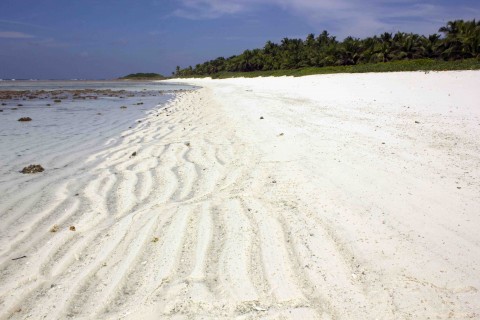
In between these shores a lush covering of shrubs and trees that can handle the sandy soil and hot tropical conditions turn the island a rich green. A stiff breeze keeps things cool as I walk around the island in the hot sunlight. Red footed booby hover around me as I walk the north western shore and several different species of crab scuttle around my feet. I’m skirting the island in an anti-clockwise direction and the low vegetation to my left is peppered with the black and white plumage of red footed booby on the nest. To my right the ocean stretches unbroken to the horizon. This is a very remote island. A tiny speck in the ocean a little over a mile long and never wider than a few hundred meters.
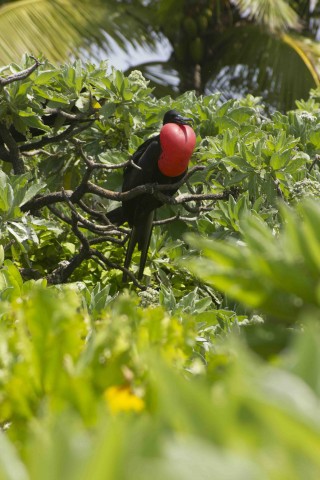
Less frequent amongst the booby nests are the larger forms of frigate birds – the red inflated throats of the breeding males bright against the greenery. Their juveniles are far more scraggly and unkempt to the eye.
After doing a loop of the beach it is time to cut through the island and get some imagery of the interior. In the centre of the island between the beaches there is a small stretch of forest. This is the domain of the noddy terns. They seem to be the only ones that can find ready nesting amongst the precarious fronds of the palm trees here. As we walk beneath the canopy they flit down from their roosts and nests and circle our heads looking curiously down as they wonder at our intrusion.
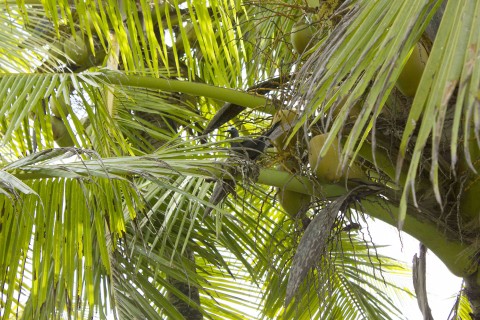
Amongst the heliotrope bushes on the southern beach there are many heliotrope moths servicing the plants flowers whilst their caterpillars feed on the shrubs leaves. Today this is the leeward side of the island so the insects can safely flutter between the blooms without being buffeted offshore. Spiders and their webs gather a harvest of these moths as they fly by. On the ends of the island the vegetation falls away to low shrubs and grass. Small colonies of brown booby make best use of these flat areas for their preferred ground nesting habits.
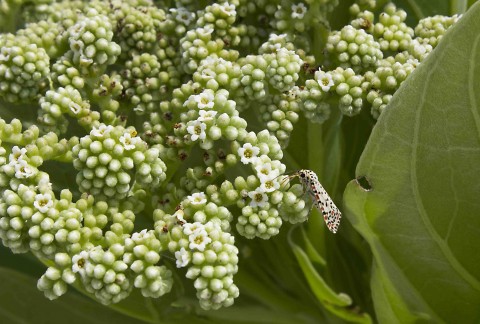
Finally done with the days survey round the island we return to the boat, load up and head back out through the channel. It is now low tide and the channel is more pronounced between exposed bits of reef. Closeted by this three large nurse shark are evident in the turquoise hued shallows of the shallow. We dodge them as we motor out through the low waves and return to the research vessel.

Now done with the only island in sight we join the diving teams for the afternoon. Dropping in to the waters to the east of Nelson after lunch we immediately encounter a huge richness and diversity of life. Shoals of several different species cloud around us as we drift toward deeper water. Abundant corals crowd the seabed. The reef reaches up to 10 meters beneath the surface and it is an eden of coral at this depth. As we drop deeper there is a swift change below 15 meters. Although the fish life remains prolific the corals suddenly are dead. Algae and sponge covered skeletons stretching away into the distance. One live coral that we swim by is freshly dead with two crown of thorns starfish at the transition between white freshly bleached skeleton and brown live coral tissue.
Through the dive we see numerous other starfish. Perhaps an outbreak of this species is the cause of this mass coral mortality. As with elsewhere in the Chagos though the pace of recovery from a deadly event like this is already evident. On each coral table that was dead for several months a proliferation of new coral recruits – fresh sprouts of live tissue seeded from spawning events – were evident. Healthy unstressed reefs can regenerate from isolated impacts like this.
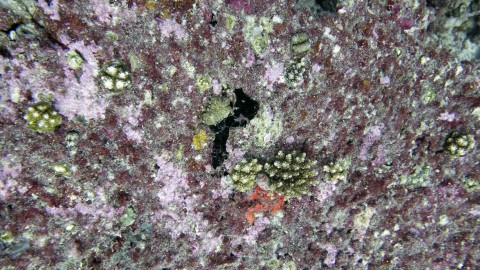
As we progress through our survey back toward the shallows we again transition away from the dead skeletons to a rich garden of corals stretching away in the shallows. Huge grouper gather in groups and a grey reef shark circles us as we head for the surface.
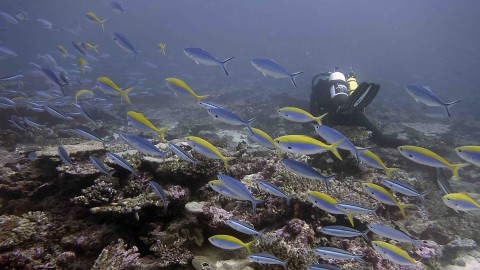
A day of reminders how special this place is on the small slips of atoll islands and beneath the waves.

